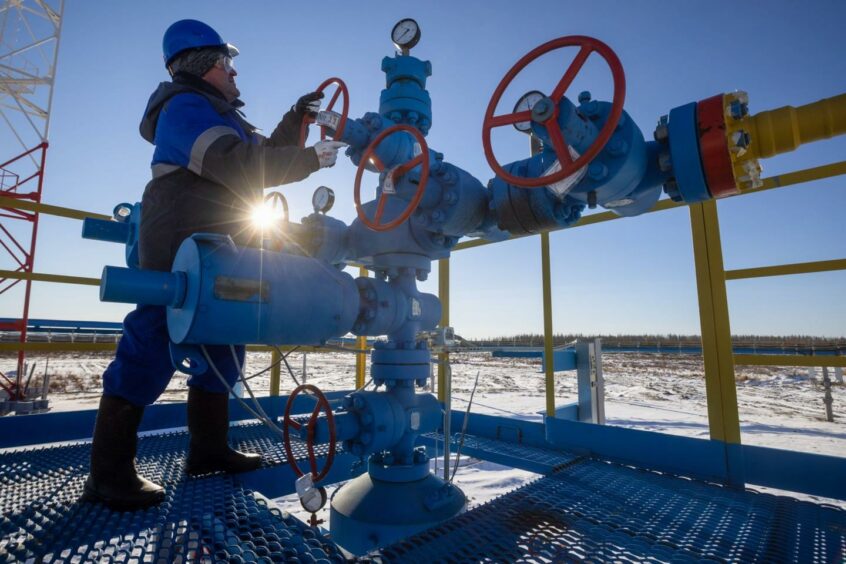
The European Union can reduce its demand for Russian gas by two thirds before the end of 2022 and aims to eliminate this dependence entirely before 2030.
The REPowerEU plan would remove at least 155 billion cubic metres of gas, equivalent to the amount imported by the EU from Russia in 2021. The European Commission, setting out the plan today, said it would aim to achieve two thirds of this amount within a year.
As a result, the EU would no longer be dependent on a single supplier.
Commission President Ursula von der Leyen said Europe must become independent from Russian supplies.
“We simply cannot rely on a supplier who explicitly threatens us. We need to act now to mitigate the impact of rising energy prices, diversify our gas supply for next winter and accelerate the clean energy transition,” she said.
A move to renewables, hydrogen and increased energy efficiency is essential to become “truly independent and master our energy system. I will be discussing the Commission’s ideas with European leaders at Versailles later this week, and then working to swiftly implement them with my team.”
The Commission has set out two pillars to reduce demand. It will diversify gas supplies, which will mean more LNG and pipeline imports from non-Russian sources, in addition to alternatives such as biomethane and green hydrogen.
The second pillar will be reducing fossil fuel consumption. It aims to achieve this through increasing energy efficiency, renewables and electrification.
By the numbers
Renewable energy and hydrogen will play an increasing role as time goes on. In the near term, LNG will provide the required flexibility.
Imports have already increased in 2022, reaching a record of 10 bcm in January and higher still in February. The Commission said the EU could import an additional 50 bcm per year of LNG.
The REPowerEU plan also includes a Hydrogen Accelerator. It believes that an additional 15 million tonnes per year of green hydrogen would replace 25-50 bcm of Russian gas by 2030. This would consist of 10mn tpy imported and 5mn tpy from domestic sources, in addition to the 5mn tpy already accelerated.
The plan calls for the biomethane target to be doubled to 35 bcm by 2030.
Finally, improving efficiency under the Fit for 55 programme would provide 100 bcm per year of gas savings by 2030.
Storage
The Commission made it clear this was driven by Russia’s invasion of Ukraine. This shift will increase European energy independence from “unreliable suppliers and volatile fossil fuels”.
Russia provides 45% of European gas imports, with another 25% of oil imports and 45% of coal imports.
Commissioner for Energy Kadri Simson said the Russian invasion of Ukraine had aggravated supply questions. “For the remaining weeks of this winter, Europe has sufficient amounts of gas”, Simson said. “But we need to replenish our reserves urgently for next year.”
Gas storage is just under 30%, the political body said.
The Commission has called for EU gas storage to be at least 90% full by October 1, 2022. “We have also outlined price regulation, state aid and tax measures to protect European households and businesses against the impact of the exceptionally high prices,” the commissioner said.
The Commission is investigating the gas market among concerns of competition issues by operators, naming Gazprom.
Statements from the group confirmed that EU states could impose windfall taxes and redistribute these to consumers.
Germany has signalled that it will now support two LNG projects planned, at Brunsbüttel and Wilhelmshaven. State-backed KfW has recently announced a plan to join the Brunsbüttel project as a shareholder, in partnership with Gasunie.
Recommended for you

